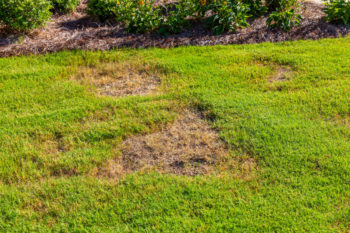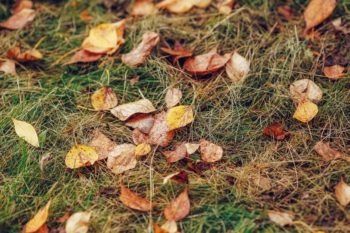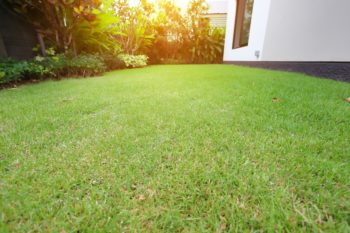Have you noticed brown patches or areas of dying grass in your lawn? If so, your lawn might be experiencing a common and troublesome problem caused by chinch bugs. Understanding how to identify chinch bug damage, the types of warm-season grasses they affect, the conditions they thrive in, and effective treatment methods is crucial for maintaining a healthy and vibrant lawn.
In this article, we will delve into the world of chinch bug damage, providing you with the essential knowledge to protect your lawn.

Identifying Chinch Bug Damage
Chinch bugs are small, black or brown insects that measure around 1/5 inch in length. However, their damage is far more noticeable than their size. Chinch bugs suck sap from grass blades, causing them to turn yellow, then brown and wither.
The damage typically starts as small circular or irregular patches but can quickly spread, resulting in large areas of dead or dying grass. As the infestation progresses, you may even observe a reddish hue on the stems and leaves of infested grass.
Grass Types Affected by Chinch Bugs
Chinch bugs primarily target St. Augustine turfgrasses, but they are also found in Bermuda and Zoysia grasses. These grasses are commonly found in southern regions where the climate is hot and humid. If you have any of these grass types in your lawn, it’s essential to be vigilant and proactive in chinch bug prevention and control.
Conditions Favorable for Chinch Bug Infestations

Chinch bugs thrive in warm and dry conditions, which is why they are prevalent in the summer and early fall.
Overly dry lawns, poor irrigation practices, and areas that receive excessive sun exposure are particularly susceptible to chinch bug damage.
These pests prefer lawns with thatchy grass, as it provides an ideal hiding place and protection for their eggs and nymphs.
Fall and spring are both great times of year to aerate your lawn. Keeping your soil healthy will deter pest infestations.
Prevention and Treatment
Preventing and controlling chinch bug damage involves a combination of proactive measures and targeted treatments. Here are some effective strategies:
Maintain Proper Lawn Care: Regular and proper lawn maintenance will help prevent chinch bug infestations. This includes regular mowing, proper irrigation, and adequate fertilization to promote a healthy and robust lawn.
Monitor Your Lawn: Regularly inspect and monitor your lawn for signs of chinch bug damage. Look for brown patches, yellowing grass, or the presence of adult chinch bugs near the damaged areas. Early detection can help prevent extensive damage.
Thorough Watering: Chinch bugs tend to thrive in dry lawns, so proper watering is crucial. Water deeply and infrequently to encourage deep root growth and discourage chinch bug populations. Check out our lawn irrigation service page.
Reduce Thatch Buildup: Regular dethatching can prevent chinch bugs from establishing a stronghold in your lawn. Remove excessive thatch to eliminate their hiding places and disrupt their life cycle.
Use Beneficial Nematodes: Beneficial nematodes are microscopic worms that feed on chinch bugs and their larvae. Introduce these natural predators into your lawn following the manufacturer’s instructions to help control chinch bug populations.
Apply Insecticides: In severe cases, insecticides formulated specifically for chinch bug control may be necessary. Consult with a professional lawn care service for proper identification and application of appropriate insecticides. Follow the instructions carefully and apply when chinch bugs are most active.
Professional Lawn Care Services: If chinch bug damage persists despite your efforts, it may be beneficial to seek the assistance of a professional lawn care service. They have the expertise, tools, and knowledge to effectively identify and treat chinch bug infestations.

Protecting Your Lawn from Chinch Bug Damage
Maintaining a healthy and vibrant lawn requires proactive efforts to prevent and treat chinch bug damage.
Regular monitoring, proper lawn care practices, and timely treatment have a significant impact on preventing chinch bug infestations. Take appropriate measures and seek professional help when needed. You will keep your lawn lush and free from the detrimental effects of chinch bug damage.
